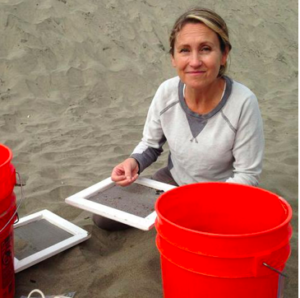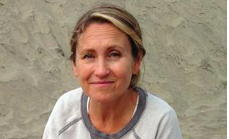
Unless you have school-age children, you may not realize that we’ve just come through the second biggest shopping season of the year. According to Deloitte’s July 2019 Back-to-School Survey, US shoppers will have spent $27.8 billion, or $519 per student, on everything from clothing to calculators. Of that, $6.1 billion will have gone to purchasing school supplies.
Heather Itzla reads that last figure and thinks plastic waste. Realizing how back-to-school shopping encourages the rote purchase of disposable plastics, Itzla and partner Nicole Kozlowski founded Wisdom Supply Co. to provide affordable, zero-waste alternatives to most school supplies.
The company’s paper-covered binders are 100% recyclable. Its refillable dry erase markers feature aluminum barrels and replaceable nibs. Its highlighters are made of wood and wax. Plus, Wisdom Supply Co. has been a B Corp since its 2017 launch.
Impact Report producer Katie Ellman spoke with Itzla about the company’s origin story, how it designs its products, and why affordability is a key component of its mission.
The following Q&A is an edited excerpt from the Bard MBA’s September 20th The Impact Report podcast. The Impact Report brings together students and faculty in Bard’s MBA in Sustainability program with leaders in business, sustainability and social entrepreneurship.
Reprinted from GreenBiz.
ELLMAN: WHY SCHOOL SUPPLIES?
One of the most prescriptive plastic generating machines is back to school shopping. It’s increasingly filled with requests for plastic products: “Get four plastic folders and six plastic highlighters.”
Before I ever even thought about this as a business, my kids were in middle school and I couldn’t find waste-free products. I spoke with their school and asked if I could purchase supplies for the whole school in the most zero waste way I knew and then have families reimburse me. That went on for a few years, and when it was time for my kids to move out of that school, I left the school with the best practices.
But it kind of fell apart, so I went back and helped them create a system to keep the ordering going forward. From there, it became clear that it needed to be a business. When you do these things as a volunteer, they fall apart when you leave. It couldn’t sustain itself as a volunteer effort.
ELLMAN: HOW BIG IS YOUR TEAM?
There are two of us and a board. My co-founder is Nicole Kozlowski. This is our third year of school deliveries and shipping nationwide, and we’re currently speaking to funders.
Any time you’re doing something good for the environment, it’s assumed that you have to be a nonprofit. I felt that we didn’t have to be that. I think more and more companies, especially with the growth of the B Corp movement, are saying you can work for the environment, and work for profit, and work for your employees as well.
ELLMAN: HOW HAVE THINGS CHANGES IN THE FEW YEARS THAT YOU’VE BEEN IN BUSINESS?
It started as curating. I collected all the non-plastic products I could find. Now, we’re shifting into a manufacturing space, and I think you’ll see as the years go on that we’ll be introducing two or three of our own products each year. With what exists already, it can be difficult to make sure you have enough quantity to satisfy all the schools that are signing up, or the products don’t quite hit our mark for being recyclable or waste-free.
For instance, we had a pencil tin made because the pencil tins on the market had too much space in them. If there’s too much space, students will fill them with garbage. We designed our pencil tin to hold one layer of items because when you’re mindful of what you have—one pencil, one sharpener, one highlighter, one eraser—it’s really all you need.
Our first customers were friends of mine and local schools, but now we’re shipping internationally to customers in places like the UK and Australia. We’re continuing to learn to respond to the requests we get.
ELLMAN: YOU WERE FOUNDED IN 2017 AND ARE ALREADY A B CORP.
When I realized that this had to be a business, I read the B Corp Handbook and decided that I’d build the business using the Handbook as a guide. I knew I wanted to set up a for-profit business, but I didn’t want it to be seen as greenwashing or capitalizing on the environmental movement. I wanted that certification from the get go.
I read about Patagonia being a B Corp and about the company’s culture, and that really motivated me to set up the business from the bottom up. If you build it that way, it makes getting certified a little easier.
There are so many things to think about when you are setting up a new business, I found it incredibly helpful to but to have a guide to help you make decisions you don’t really know how to make. We were recently named best for the world environment and are in the top 10% of companies.
ELLMAN: HOW DO YOU MAKE THIS AFFORDABLE FOR ALL CUSTOMERS?
I certainly have a greater respect for product manufacturing now that I work on making our own products. You need to look at the quantities that you need to bring to market so that a product’s affordable, especially when you’re dealing with something like school supplies, where it’s expected that you’re coming in at a certain price.
When I first started this, I knew the entire thing would fail if I priced things more expensively than the typical back to school shopping list, so I bought and sold at cost to prove that there was a desire for people to buy products that didn’t contribute to the waste stream. Now, we approach affordability from a number of ways, one of which is that we do keep our prices pretty much on par with what you’re going to see in the stores.
We don’t, though, do the specials you see in the big box stores. That’s intentional—we’re not trying to get you to buy anything you don’t need, and we’re not packing anything in a way that forces you to buy multiples. For example, the shopping list says you need four folders, but at the big box store you can only get a pack of twelve that’s wrapped in plastic.
From us, if you want four folders, you can get four folders. Plus, they’re a higher quality paper folder. Because we’re not forcing you to buy more with more packaging, you actually end up spending less.
